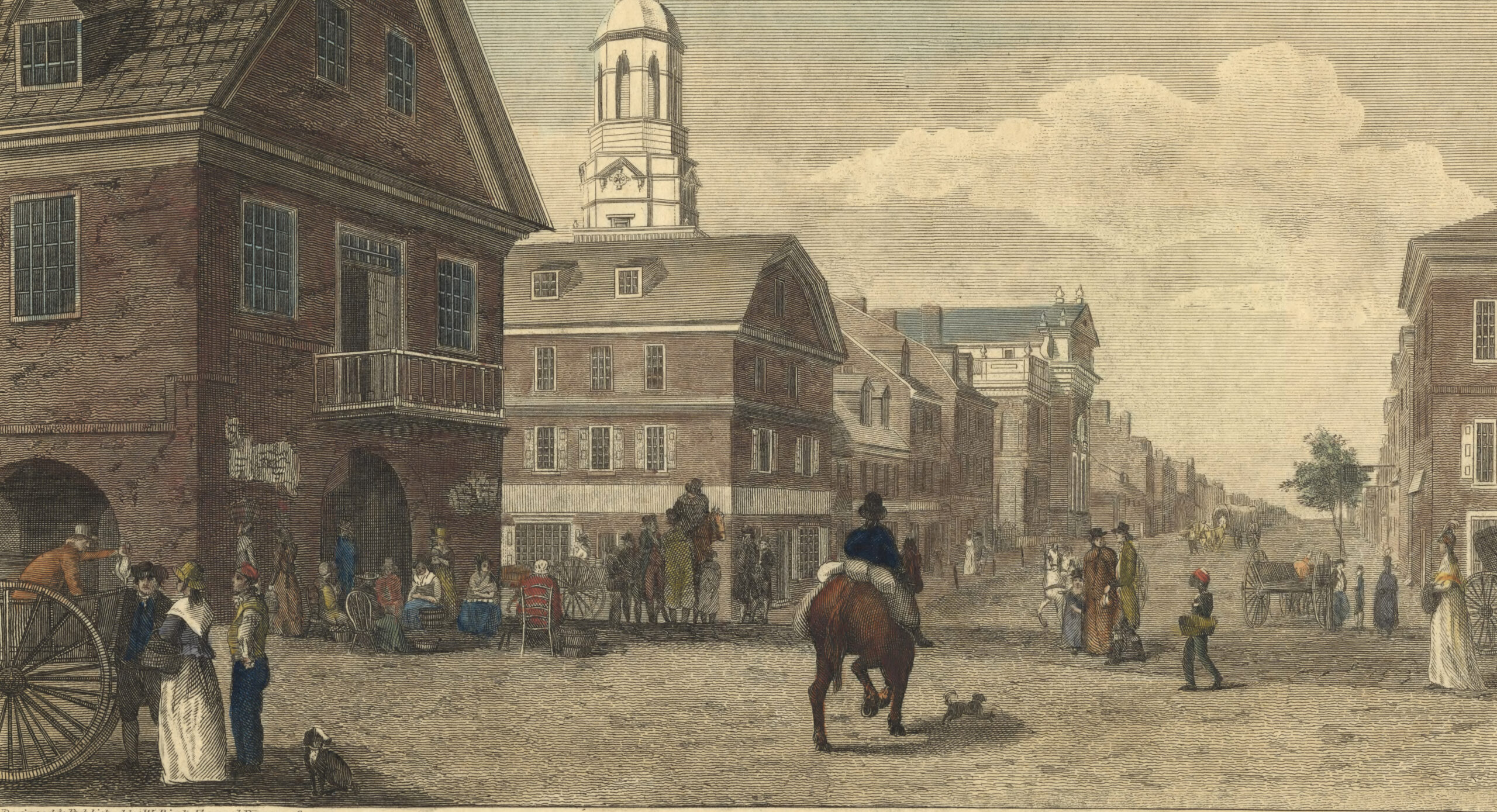While researching this episode, I was reminded of the Leslie P. Hartley quote: “The past is a foreign country; they do things differently there.”
We in Philadelphia feel that we kind of know Colonial Philadelphia. It was a simpler time. Men wore those funny, triangular shaped hats. Horses clip-clopped along cobblestone streets.
But Colonial Philadelphia was fundamentally, a very different place. It wasn’t a less complicated version of today, dressed up in ye olde clothes. And it was a place that many of us would not actually enjoy visiting.
Independence Mall
The National Park Service at Independence Mall is somewhat responsible for perpetuating this romantic myth about Colonial Philadelphia. In the 1950s and 60s, they created a cleaned up colonial version of the city by liberally pruning away layers of complicated history. They got rid of physical structures that did not date to a certain period in colonial and revolutionary-era Philadelphia. And they also removed the stories that showed the complexity, and inequality, of colonial society.
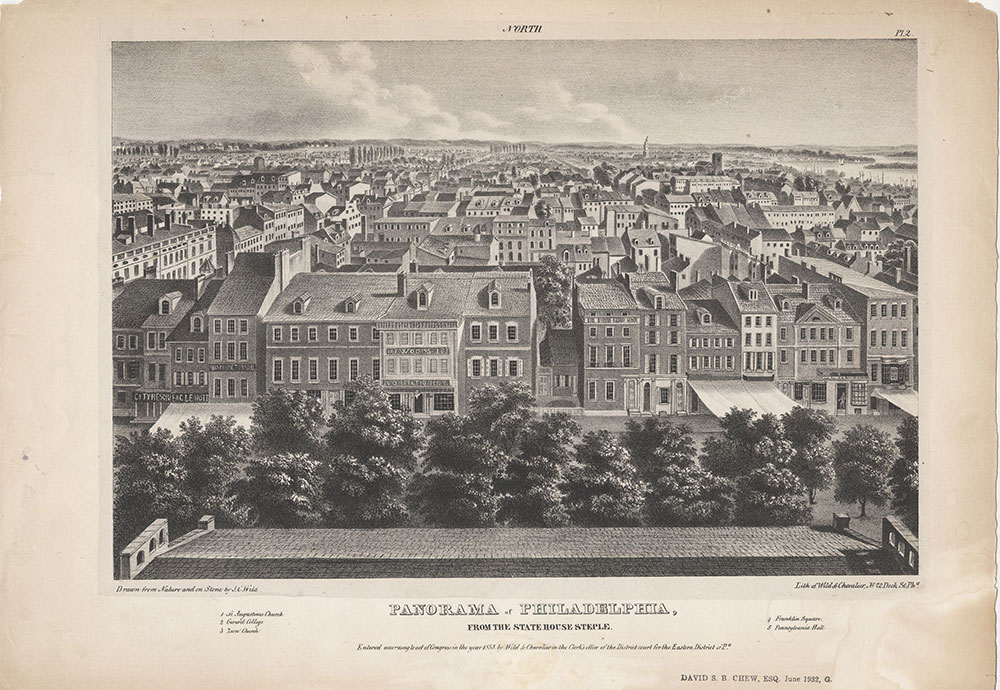
Looking north from Independence Hall c. 1838
J.C. Wild print, Free Library of Philadelphia
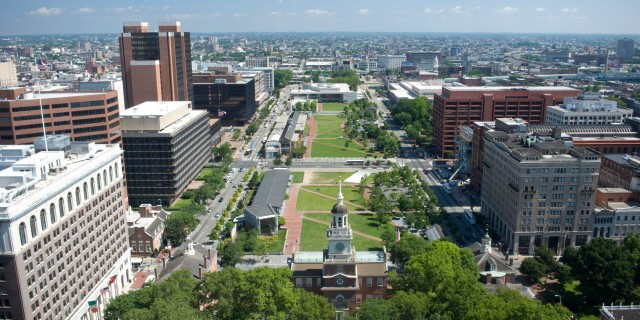
Looking north from Independence Hall today
-Independence Hall Visitor Center
Loss of Complexity
I think this simplification and loss of complexity is a problem because the founding documents of the United States of America were soon to be written here, in the dirty, crowded, unequal, and unregulated streets of Philadelphia. We feel a sense of closeness and understanding of these enduring founding documents, but they were written in a city that we wouldn’t recognize: a city where enslaved Africans and indentured servants labored, where women had few legal rights, where Native Americans were cheated of their land, where criminals were publicly whipped and hung, and the poor scraped by in squalid back alleys.
There was still an almost medieval sense of order to society, with white men of property at the top. Everyone else’s value was rated against how close they came to meeting this standard. And it was acceptable to mete out justice unequally based on your rank in society.
But there was always resistance
But there was always resistance to this order: servants and the enslaved gathered boisterously outdoors on their day off, enslaved people ran away, indentured servants left to fight with the British, and self-supporting women worked outside of the home to keep their families fed, clothed, and together.
We have come a long way from those days in colonial Philadelphia, but not far enough.
Gallery

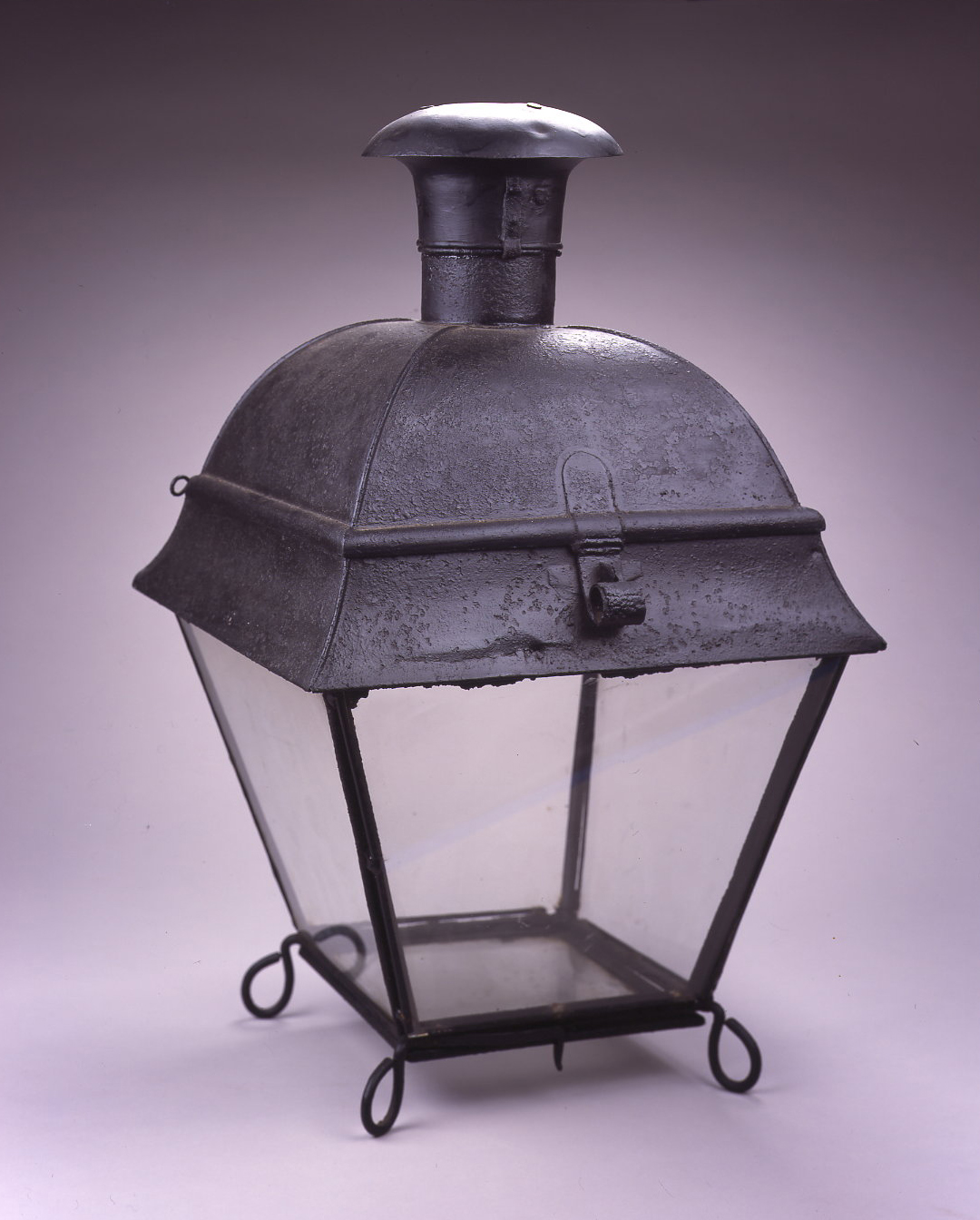
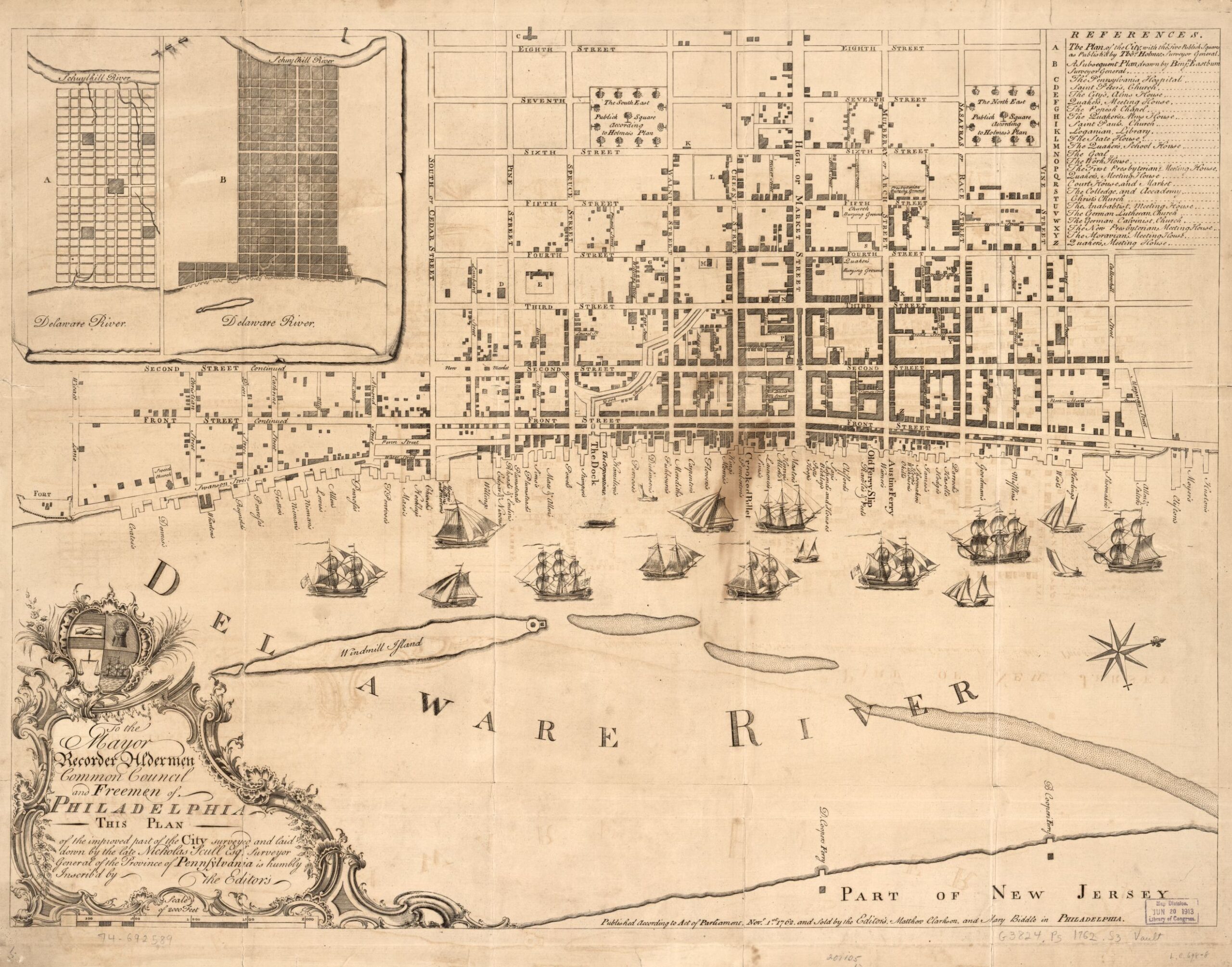
Sources
Allinson, Edward P. and Boies Penrose. Philadelphia 1681-1887: a History of Municipal Development. Baltimore, Publication Agency of the Johns Hopkins University. Allen, Lane & Scott, 1887.
Brissot De Warville, J.-P. New travels in the United States of America. Performed in. trans by Barlow, Joel, Lator [Dublin, Printed by W. Corbet, for P. Byrne, A. Gueber et, 1792] Pdf. Retrieved from the Library of Congress, www.loc.gov/item/16012303/
Childs, Ward J. “The Tangible Manifestation of Law (Part I)”. Newsletter of the Philadelphia City Archives. No 31 (June 1977). https://www.phila.gov/phils/Docs/otherinfo/newslet/law1.htm
Handler, Jerome S., and Matthew C. Reilly. “Contesting ‘White Slavery’ in the Caribbean: Enslaved Africans and European Indentured Servants in Seventeenth-Century Barbados.” NWIG: New West Indian Guide / Nieuwe West-Indische Gids, vol. 91, no. 1/2, [Brill, KITLV, Royal Netherlands Institute of Southeast Asian and Caribbean Studies], 2017, pp. 30–55, https://www.jstor.org/stable/26552068.
Harris, P. M. G. “The Demographic Development of Colonial Philadelphia in Some Comparative Perspective.” Proceedings of the American Philosophical Society, vol. 133, no. 2, American Philosophical Society, 1989, pp. 262–304, http://www.jstor.org/stable/987055.
Lemay, J. A. Leo. The Life of Benjamin Franklin, Volume 1 : Journalist, 1706-1730, University of Pennsylvania Press, 2005. ProQuest Ebook Central, https://ebookcentral-proquest-com.proxy1.lib.tju.edu/lib/philau/detail.action?docID=3442142.
McMahon, A. Michal. “”Small Matters”: Benjamin Franklin, Philadelphia, and the “Progress of Cities”.” The Pennsylvania Magazine of History & Biography, Vo. 96, No. 2 (April 1992), pp. 157-182.
Milroy, Elizabeth. “"For the like Uses, as the Moore-Fields": The Politics of Penn's Squares.” The Pennsylvania Magazine of History and Biography , Jul., 2006, Vol. 130, No. 3 (Jul., 2006), pp. 257-282.
Murphy, Andrew R., et al. The Worlds of William Penn. New Brunswick: Rutgers University Press, 2018.
Nash, Gary B., et al. “The First Decade in Pennsylvania: Letters of William Markham and Thomas Holme to William Penn: Part I.” The Pennsylvania Magazine of History and Biography, vol. 90, no. 3, Historical Society of Pennsylvania, 1966, pp. 314–52, http://www.jstor.org/stable/20089932.
NASH, GARY B. First City: Philadelphia and the Forging of Historical Memory, University of Pennsylvania Press, 2006, http://www.jstor.org/stable/j.ctt3fj3c5.4.
Nash, Gary B. “Slaves and Slaveowners in Colonial Philadelphia.” The William and Mary Quarterly, vol. 30, no. 2, Omohundro Institute of Early American History and Culture, 1973, pp. 223–56, https://doi.org/10.2307/1925149.
Nash, Gary B. and Billy G. Smith. “The Population of Eighteenth Century Philadelphia.” Pennsylvania History, July 1975: 362-368.
Newman, Simon P. Parades and the Politics of the Street: Festive Culture in the Early American Republic. Philadelphia: University of Pennsylvania Press, 1999.
Olton, Charles S. “Philadelphia’s First Environmental Crisis.” The Pennsylvania Magazine of History and Biography, vol. 98, no. 1, Historical Society of Pennsylvania, 1974, pp. 90–100, http://www.jstor.org/stable/20090816.
Roach, Hannah Benner. “The Planting of Philadelphia: A Seventeenth-Century Real Estate Development. I.” The Pennsylvania Magazine of History and Biography, vol. 92, no. 1, Historical Society of Pennsylvania, 1968, pp. 3–47, http://www.jstor.org/stable/20090131.
Roach, Hannah Benner. “The Planting of Philadelphia a Seventeenth-Century Real Estate Development: Ii.” The Pennsylvania Magazine of History and Biography, vol. 92, no. 2, 1968, pp. 143–94, http://www.jstor.org/stable/20090159.
Salinger, Sharon V. “‘Send No More Women’: Female Servants in Eighteenth-Century Philadelphia.” The Pennsylvania Magazine of History and Biography, vol. 107, no. 1, Historical Society of Pennsylvania, 1983, pp. 29–48, http://www.jstor.org/stable/20091738.
Salinger, Sharon V. “Spaces, inside and Outside, in Eighteenth-Century Philadelphia.” The Journal of Interdisciplinary History, vol. 26, no. 1, The MIT Press, 1995, pp. 1–31, https://doi.org/10.2307/205547.
Scharf, J. Thomas. History of Philadelphia, 1609-1884. Michigan: L.H. Everts, 1884.
Smith, Billy G. “Death and Life in a Colonial Immigrant City: A Demographic Analysis of Philadelphia.” The Journal of Economic History, vol. 37, no. 4, Cambridge University Press, 1977, pp. 863–89, http://www.jstor.org/stable/2119346.
Smith, Billy G. “Inequality in Late Colonial Philadelphia: A Note on Its Nature and Growth.” The William and Mary Quarterly, vol. 41, no. 4, Omohundro Institute of Early American History and Culture, 1984, pp. 629–45, https://doi.org/10.2307/1919157.
Smith, Billy G. “The Material Lives of Laboring Philadelphians, 1750 to 1800.” The William and Mary Quarterly, vol. 38, no. 2, Omohundro Institute of Early American History and Culture, 1981, pp. 164–202, https://doi.org/10.2307/1918774.
Snead, James E., Erickson, Clark L., and Darling, J. Andrew, eds. Landscapes of Movement : Trails, Paths, and Roads in Anthropological Perspective. Philadelphia: University of Pennsylvania Press, 2009. Accessed December 16, 2021. ProQuest Ebook Central.
Soderlund, Jean R. Lenape Country: Delaware Valley Society Before William Penn. Philadelphia: University of Pennsylvania Press, 2015.
Soderlund, Jean. “Colonial Philadelphia.” Encyclopedia of Philadelphia. 2017. https://philadelphiaencyclopedia.org/archive/colonial-philadelphia/
The Statutes at Large of Pennsylvania from 1682-1801. Compiled Under the Authority of the Act of May 19, 1887. United States, State Printer, 1896.
Warner, Sam Bass. The Private City: Philadelphia in Three Periods of Its Growth. Philadelphia, PA: University of Philadelphia Press, 1968.
Young, Chester Raymond. “The Evolution of the Pennsylvania Assembly, 1682-1748.” Pennsylvania History: A Journal of Mid-Atlantic Studies, vol. 35, no. 2, Penn State University Press, 1968, pp. 147–68, http://www.jstor.org/stable/27771682.
Zallen, Jeremy. American Lucifers: The Dark History of Artificial Light, 1750–1865. University of North Carolina Press, 2019.
